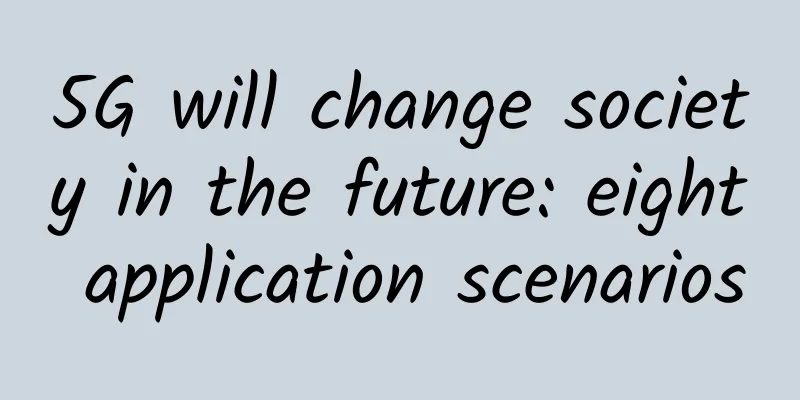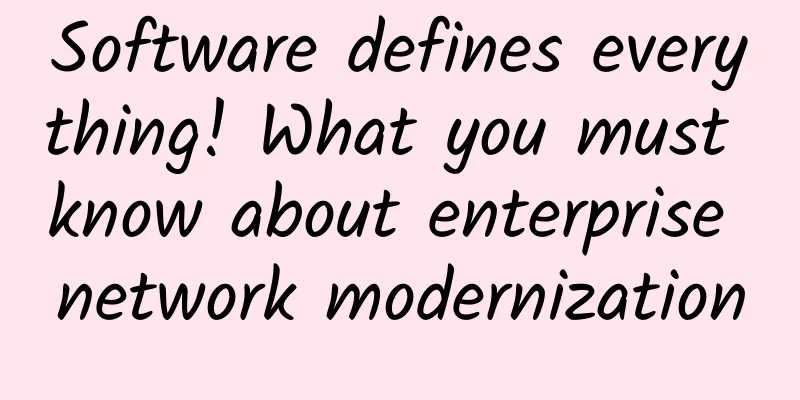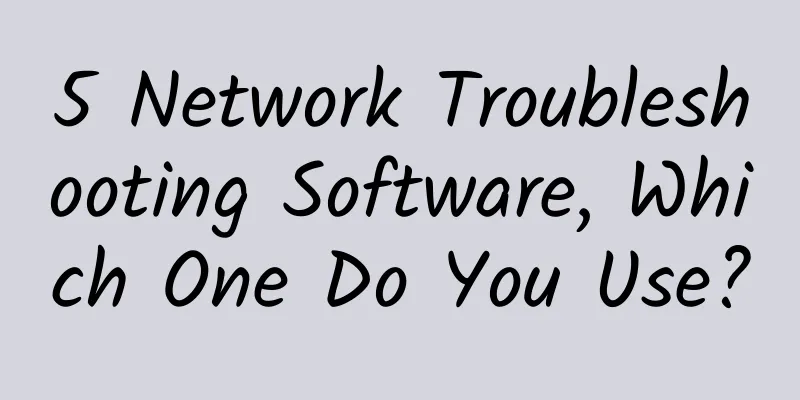5G: The era of “oligopoly” operators ends, and the era of cross-border “group fights” begins

|
If you establish a mapping relationship between IT and CT, you will see that the succession of technology seems to be repeating itself. Mobile communications are changing from the era of "mainframes" to "minicomputers" and even to the era of "personal computers". 5G is a brand new era that IoT companies cannot overemphasize.
Today, we try to explore a question: Who will 5G shuffle away, and who will it bring unprecedented opportunities to? After all, 5G is a brand new era that IoT companies cannot overemphasize. Will 5G be the last G? Buffett's partner Charlie Munger once said: "If I knew where I was going to die, I wouldn't go there." However, sometimes, the wheel of technological development will push some things in front of you into a desperate situation, and then allow them to be reborn. Since humans entered the information age, the history of using IT technology is not long, only about 50 years. In this short period of time, the power of technological progress has enabled us to move from the mainframe era to the minicomputer and personal computer era, and then to today's cloud computing era. In the mainframe era, computing existed in a centralized form. Who would have thought that personal computing would develop so rapidly, with everyone having a computer and a mobile phone, and computing becoming popular and distributed? Then in the cloud computing era, manufacturers placed computing tasks in huge data centers. From centralization to distribution and then back to centralization, technology has evolved in a spiral, and the operating model of business has also changed accordingly. Mainframes, minicomputers, and even traditional PCs have all been pushed into a desperate situation by the wheel of historical development. Companies such as UNIVAC and NCR in the mainframe era disappeared, and famous companies such as SUN and DEC in the minicomputer era were short-lived. Companies that predict the wheel of technology will be able to be reborn or rise accordingly. Seeing the changes in the form of personal PCs and the momentum of cloud computing, Microsoft announced that Windows 10 is Microsoft's last Windows operating system and split the Windows department just to hold the intelligent cloud and intelligent edge more tightly. Based on the development of modern computing and Internet ecology, Salesforce created an on-demand Internet software service that does not require local deployment, namely SaaS. Shuttle to the other side. Human beings have been using CT technology in mobile communications for a short time, only about 40 years. In the 1G era of the first generation of mobile communications, mobile phones were a rarity that only the rich could enjoy. In the subsequent 2G, 3G, and 4G eras, operators in various countries spent huge sums of money to purchase licenses and spectrum, creating a number of giant telecom operators such as China's three major operators, Britain's Vodafone, and Spain's Telefonica. In the blink of an eye, 5G is here. Recently, when I was chatting with Ning Yu, chief software strategy expert at Huawei, he said: "It took us 40 years to go from 1G to 4G. When thinking about the future of 5G, we can't just look at the past three to five years." I agree with this view of time. If you establish a mapping relationship between IT and CT, you will see that the changes in technology seem to be repeating themselves. Mobile communications are shifting from the "mainframe" era to the "minicomputer" era and even to the "personal computer" era. Although we started from 1G and went through 2G, 3G, and 4G, the logical architecture of the entire communication network has not changed significantly - they use a relatively unified network to provide services to all users. As the saying goes, long separation will eventually lead to reunion, and long reunion will eventually lead to separation. In the 5G era, changes have taken place. Its goal is to promote the realization of the true Internet of Everything, that is, to meet the needs of various scenarios. In different scenarios, the requirements for network characteristics such as network speed, latency, number of connections, energy consumption, etc. are actually different, and some are even contradictory. Therefore, 5G proposes a key concept of "slicing", which disassembles and refines the network and strengthens distribution to more flexibly respond to scenario-based needs. The figure below is a 5G network architecture diagram from SK Telecom, which fully shows the evolution of the overall network architecture from 4G to 5G. From centralization to decentralization, the spiral evolution of technology is happening again, and the operating model of business will also change. Let us boldly imagine what will happen in the next few years. In order to meet the needs of various vertical industries, such as airports, docks, high-speed railways, subways, factories and other specific scenarios, the amount of data generated by operators will grow exponentially. The nature of these operators is fundamentally different from the current oligopoly operators. They are "operators of everything." In the past 1G-4G era, oligopolistic operators mainly provided services to individual users, the industrial chain was relatively concentrated, and operators had a strong voice in the industrial chain. However, in the 5G era, the demand side will gradually shift from individual users to industrial vertical industries, so all-in-one operators will gradually have greater potential. I recently saw an article saying that "5G will be the last G", but I have reservations. The wheel of technological progress will not stop, and 6G is likely to arrive. After the distributed transformation of “slicing”, mobile communications may still move towards centralization. However, the core driving force of the industry in the future may not necessarily be the same group of companies. 2. Current giants and future giants So how will the journey from an oligopoly operator to an operator of everything evolve? Nothing will happen suddenly, only gradual changes. Let’s do a simple deduction together. [Phase 1] B2B users “rise to prominence” Although the current 5G demand is still driven by individual users and applications such as video, over time, B2B users in various vertical industries have begun to replace B2C individual users and become the main customers of mobile communications. The change in customer base may be faster than expected. According to Vodafone's latest "Internet of Things Market Barometer 2019", IoT applications are accelerating significantly, with more than one-third of all companies surveyed applying IoT technology. The report analysis shows that we have passed the tipping point and the Internet of Things has become mainstream, with 52% of users considering using 5G technology. These industries and enterprises have many personalized needs and different business scenarios, making them difficult to replicate. Initially, 5G networks may only support relatively niche IoT use cases. As 5G network performance improves, lower latency, higher speeds, and higher reliability are achieved, the enterprise user scenarios that can be covered will gradually expand. It is increasingly difficult for oligopolistic operators to continue the B2C model and rely on large-scale replication to obtain large profits. At this time, operators may try to increase user stickiness, gain initiative, and increase profits, because operators may not be able to survive if they only get returns from the network itself. Industry users are more concerned about the quality of local network coverage, as well as reliability, low cost, and low power consumption. The contradiction between oligopolistic operators and end users is becoming more obvious. [Phase 2] Triathlon heats up In the process of 5G promotion, there is a group of companies that may be more anxious than the three major operators, that is, the upstream communication equipment manufacturers. They have come up with new concepts one after another, hoping that the operators can get out of the dilemma of "increasing volume but not revenue". On the one hand, since operators are neither good at nor understand the processes and know-how of various vertical industries, it is difficult to make up for these capabilities in the short term. Some equipment vendors with industry experience may directly connect with enterprise users to provide network operations and services. In this case, the possibility of operators serving as basic pipelines is decreasing and they face the risk of being short-circuited. On the other hand, the competition for 5G is essentially a "competition for data." Operators in the 5G era will not be satisfied with just being pipelines and earning thin profits, but will actively expand upstream and downstream, from cloud platforms to edge computing, and make an overall layout. Some areas that obviously require a large amount of capital investment have been proven through practice to be the game of a very small number of oligarchs, and there are not many opportunities left for operators. For example, in the field of public cloud infrastructure, small and medium-sized enterprises or startups such as RackSpace and Joyent were quickly eliminated, and the track was occupied by giants such as Amazon and Microsoft. Although these giants are currently in their heyday, the supply attributes of "cloud computing" have certain similarities with "pipelines", and they may eventually fall into the dilemma of "increasing volume but not revenue" similar to that of operators. Therefore, their ideas are similar to those of operators, expanding upstream and downstream of the industry chain. Amazon hopes to acquire Sprint's wireless service business Boost Mobile, and BAT actively participates in China Unicom's mixed-ownership reform... Cloud computing, communication networks, and terminal hardware, although different products and technologies are becoming increasingly specialized and decoupled, their business operations are becoming more and more closely tied together. “Cloud, pipe, and terminal” have become the “triathlon” for giants to enter the field of the Internet of Things. Looking down from the overall situation, the three major operators face various cross-industry competitors:
They all hope to make a difference in the future where everything is connected. [Phase 3] Start the "group fight" mode With the continuous development of 5G, giants also need to enrich their own ecosystems, and new players have emerged in the industry: "everything operator". They have the potential to drive the industry to reduce costs, provide "high-quality and low-cost" networks that meet the personalized needs of corporate users, and provide continuous operations and services. The industrial value chain is gradually being restructured. New operators of everything, traditional giants, equipment manufacturers, financial service providers and other ecological roles have established close cooperative relationships around corporate customers. Moreover, the possibility of giants joining forces to further consolidate their territory cannot be ruled out. They form independent economies around a certain vertical field or scenario, that is, they serve a certain niche market and look for space for industrial value-added in a group "gang fight" mode. 3. The wheels of 5G keep turning 5G is an evolution, not a revolution. According to Ericsson's latest "Ericsson Mobility Report 2019", a large number of cellular IoT connections in the future will be achieved through technologies such as 5G. The report predicts that by the end of 2019, there will be more than 10 million 5G users worldwide. By the end of 2024, 5G networks will cover 65% of the world's population and carry 35% of global mobile data traffic. The application areas of 5G include asset management, smart meters, autonomous driving, fleet management, drones, VR/AR, etc. In the future, every factory and enterprise will be able to build its own “private 5G network” and become an independent “everything operator”. The report believes that the two main drivers for private 5G networks are: the need to modernize and update land mobile wireless communication LMR systems, and the need for digital transformation in various industries. As you can see, 5G is not just a technology, it has gone beyond the connotation of communication. In the past, mobile communications only provided connections, but 5G networks will build a platform. Its core is to move towards 2B and all walks of life, and promote the interconnection of all things and the cloudization of applications. This means that the future terminal system and business model will also be redefined. As for which companies will be pushed into desperate situations by 5G and which companies will be pushed to the top by 5G, you and I have already made predictions in our minds. This article benefited from the communication with Ning Yu, chief strategy expert of Huawei Software, and I would like to sincerely thank Ning Yu for his strong support during the writing process. Summary:
|
>>: MWC19 Shanghai | Open decoupling, the next generation evolution of operator networks
Recommend
The important thing in wireless in 2020 may not be 5G
With all the hype and anticipation surrounding 5G...
80VPS: Hong Kong/Japan/Korea VPS annual payment starts from 299 yuan, Los Angeles VPS annual payment starts from 199 yuan
The tribe has been sharing that there are a few C...
If only the Canvas tag is left
[[420999]] 1. Background If only the canvas tag i...
BalHost: $1.73/month-2GB/35G SSD/1Gbps unlimited traffic/Türkiye data center
Here is some information about Turkey VPS. The Ba...
Platform extension ecosystem accompanies Huawei's China ICT Ecosystem Tour 2018 Highlights Halfway Review
[Original article from 51CTO.com] In the blink of...
Huawei officially launches the "WoTu Digital Platform" to bring together trillion-level digital industries
During HUAWEI CONNECT 2019, Huawei officially rel...
Industrial IoT and manufacturing will become one of the largest 5G markets
Private 5G networks are attractive to the largest...
WOT Xu Dongchen: JVM-Sandbox Non-intrusive runtime AOP solution based on JVM
[51CTO.com original article] On May 18-19, 2018, ...
Kunpeng Programmers Spread Their Wings and You Are Here | See you in Shenzhen for the 1024 Kunpeng Programmers’ Day series of events!
On October 24, the 1024 Kunpeng Programmer's ...
Aruba announces integration with Xinshangan IoT System to enable smooth integration of Wi-Fi and IoT
Recently, Aruba, a subsidiary of Hewlett Packard ...
[New Year's Day] RackNerd: $11.49/year-1GB/21G SSD/1.5TB@1Gpbs/San Jose & Los Angeles & Seattle data centers
RackNerd recently launched the New Year 2024 spec...
Just remember one number and you can quickly calculate the available range of the IP segment.
As long as you remember a simple number, you can ...
Huawei China ICT Ecosystem Tour 2018 Series of Activities Invite You to Win the "Ecological Era" Together
[51CTO.com original article] In March this year, ...
Design and analysis of weak current intelligent system in intelligent building
The intelligentization of weak-current electricit...
Understand TCP Packet Unpacking in One Minute
Usually, you may encounter such a phenomenon duri...









